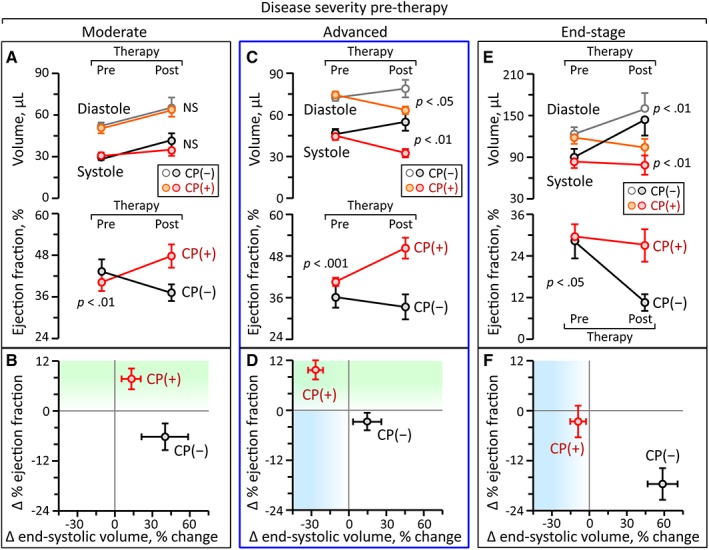Figure 3.

Grading of cardiac dilatation identifies a window of optimal response to stem cell therapy. At time of randomization (pretherapy), echocardiographic parameters were equivalent between ischemic cardiomyopathy cohorts. Prospective 1 month follow‐up (post‐therapy) validated the superiority of the CP‐treated (CP(+)) over CP‐untreated (CP(−)) cohort across all stages of cardiomyopathy, yet the effectiveness depended on the pretherapy LV volume. Specifically, in moderate cardiomyopathy (pretherapy LVEDV <65 μl; A, B), CP therapy improved EF (−6% ± 3% in CP(−), 8 ± 3% in CP(+), p < .01; A bottom), but did not change the natural course of progressive LV dilatation (A top). Advanced ischemic cardiomyopathy (65 μl < pretherapy LVEDV <100 μl; C, D) was most responsive to CP‐mediated improvement with both structural (C top) and functional (C bottom) restitution. In end‐stage cardiomyopathy (100 μl < pretherapy LVEDV; E, F), cell therapy‐hampered disease progression into terminal heart failure which was unavoidable in the untreated cohort. However, CP intervention fell short in salvaging the underlying end‐stage conditions (F). CP, cardiopoietic stem cells; EF, ejection fraction; LV, left ventricle; LVEDV, LV end‐diastolic volume
